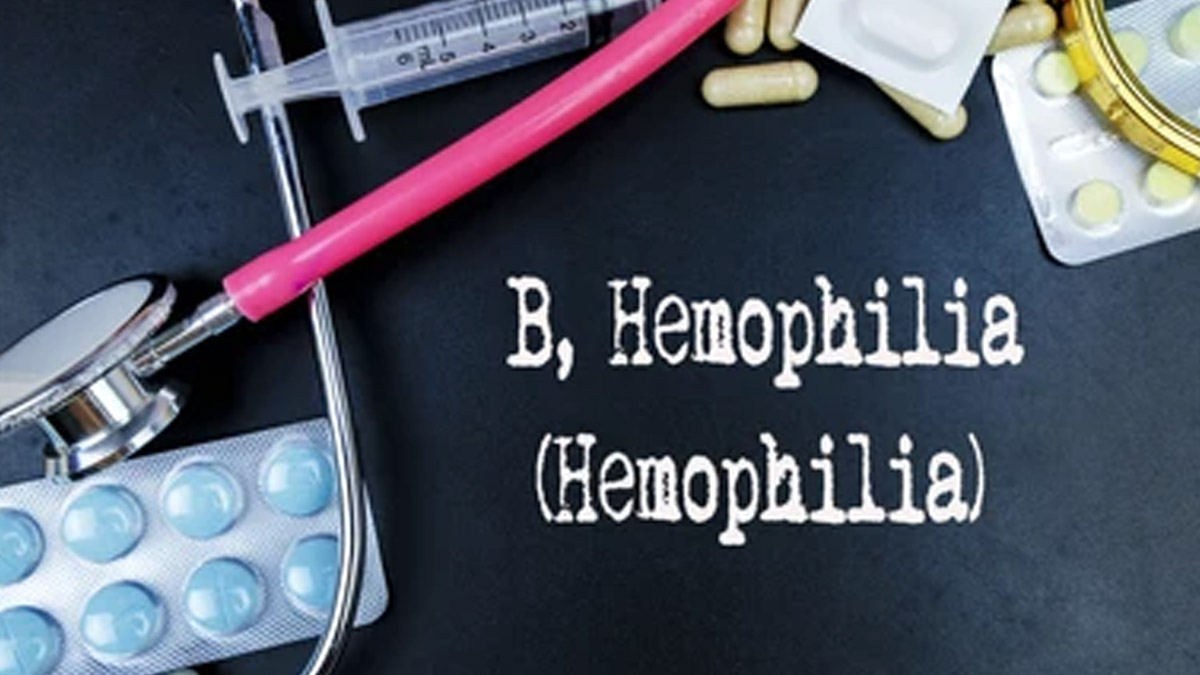
Have you ever wondered why you seem to bruise more easily than others, even without bumping into anything? Maybe it’s not just fragile skin or random clumsiness. If those purple marks show up too often or stick around too long, they could indicate Haemophilia B, a rare bleeding disorder that goes undiagnosed. This disorder can quietly affect how your body handles even the smallest injuries.
Table of Content:-
We spoke to Dr Rajmadhangi D, MBBS, MD (General Medicine), Apollo Spectra Hospital, Chennai, who explained this condition, its causes, symptoms, and treatment measures.
What is Haemophilia B?

"People with Haemophilia B suffer from abnormal blood clotting when their bodies cannot produce sufficient levels of the necessary protein clotting factor IX, also known as factor 9. This condition is often called Christmas disease, named after Stephen Christmas, the first person diagnosed with it," explained Dr Rajmadhangi.
Haemophilia B occurrence is somewhat lower compared to Haemophilia A. The genetic condition affects mainly males because the responsible X chromosome gene does not commonly appear in females, who may carry the condition and exhibit mild symptoms.
According to StatPearls, haemophilia is found globally at a rate of 1 in 1,25,000 individuals. The prevalence of haemophilia B is 3.8 cases per 1,00,000 live males and 5 cases per 1,00,000 males born. The incidence is consistent across all ethnic groups. However, consanguinity can notably raise the frequency of cases within certain communities.
Also Read: Gene Therapy: Expert Explains How It Can Help Deal With Critical Cases Of Haematology
Why Does It Cause Easy Bruising?
"Small blood vessels beneath the skin surface break because of physical contact, and blood spreads through adjacent tissues. Blood clot formation usually occurs in the body to stop bleeding immediately. The absence of factor IX delays the stopping of bleeding in Haemophilia B patients even when they experience minor vessel injuries," added Dr Rajmadhangi.
Those living with Haemophilia B usually have large or mysterious bruises because they cannot remember specific incidents that caused them. Bruising is typically the first indication of the condition emerging in childhood.
Other Symptoms To Watch For
The main sign of Haemophilia B appears as easy bruising, but the condition leads to various bleeding-related complications.

- Bleeding takes longer than usual following cuts, and injuries, as well as after surgical procedures or dental treatments.
- It is difficult to manage the ongoing nosebleeds, which frequently occur despite attempts to stop them.
- The occurrence of joint bleeding causes swelling, together with pain symptoms.
- Blood in urine or stools
People with Haemophilia B show different levels of disease severity because some cases produce only minor symptoms, and others result in random bleeding events.
Also Read: The Hidden Battle Of Haemophiliac Women: Why Do Women Go Undiagnosed?
Diagnosis and Why Early Detection Matters
-1747643368432.jpg)
"Blood tests that check clotting factor concentration help medical professionals diagnose Haemophilia B. The identification of haemophilia during its early stages remains vital because untreated bleeding could produce dangerous health issues, including severe joint damage and fatal internal bleeding, alongside muscle bleeds," added Dr Rajmadhangi.
Visiting a doctor becomes essential whenever you notice your child or yourself getting bruises easily, spending too long bleeding, or having inherited blood clotting issues.
Treatment Options
Treatment of Haemophilia B utilises replacement therapy that requires factor IX concentrates administered to people through their bloodstream to enable sufficient blood clotting. People with severe Haemophilia B receive factor IX concentrates both as needed during episodes of excessive bleeding and as a preventive measure in serious cases.
Bottomline
Dr Rajmadhangi concluded, "Haemophilia B patients can achieve full lives when their condition receives proper management care. The essential components in managing Haemophilia B include preventive care services and physiotherapy programs, along with healthcare providers and family support systems. The apparent safety of easy bruising serves as an indication for this unconventional disorder, so timely diagnosis and treatment help prevent devastating consequences and maintain good health."
[Disclaimer: This article contains information provided by an expert and is for informational purposes only. Hence, we advise you to consult your professional if you are dealing with any health issue to avoid complications.]
Also watch this video
How we keep this article up to date:
We work with experts and keep a close eye on the latest in health and wellness. Whenever there is a new research or helpful information, we update our articles with accurate and useful advice.
Current Version
